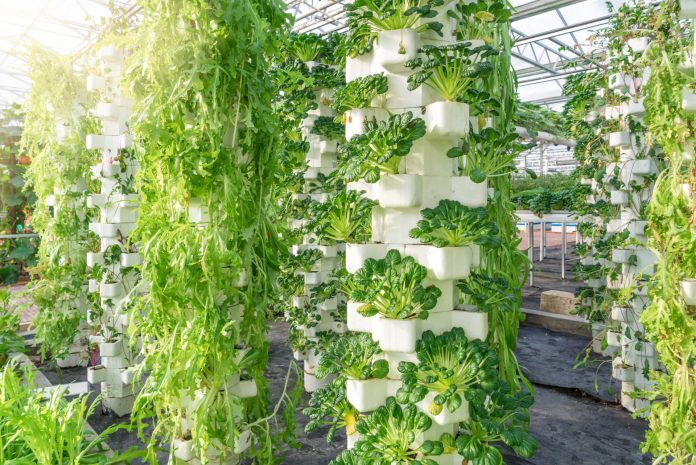Hydroponics cultivation offers a sophisticated and efficient way to grow plants without soil, utilizing nutrient-rich water solutions to nourish crops. This method has revolutionized agriculture by enabling higher yields, faster growth, and year-round production in controlled environments. This article provides an in-depth look at the various hydroponics cultivation methods, guiding you from seed to harvest.
1. Introduction to Hydroponics Cultivation
What is Hydroponics?
Hydroponics is a soil-free growing technique where plants are cultivated in a nutrient-rich water solution. This method allows for precise control over growing conditions, including nutrient levels, pH, and environmental factors.
Why Choose Hydroponics?
- Increased Yield: Plants can grow faster and produce more because of optimal nutrient availability.
- Water Efficiency: Hydroponic systems use less water compared to traditional soil-based agriculture.
- Space Optimization: Ideal for urban farming and areas with limited space.
2. Hydroponics Cultivation Methods
Nutrient Film Technique (NFT)
NFT involves a thin film of nutrient solution flowing over the roots of plants in a sloped channel.
- Setup: Plants are placed in a trough or channel where the nutrient solution continuously flows.
- Advantages: Efficient nutrient and water use, and allows for rapid growth.
- Considerations: Requires careful monitoring of nutrient levels and flow rates to prevent root drying.
Deep Water Culture (DWC)
In DWC, plant roots are submerged in a nutrient-rich oxygenated water solution.
- Setup: Plants are supported in net pots or foam, with their roots suspended in the nutrient solution.
- Advantages: Provides constant access to nutrients and oxygen, leading to vigorous growth.
- Considerations: Requires aeration to prevent root diseases and ensure adequate oxygen levels.
Ebb and Flow (Flood and Drain)
The Ebb and Flow system periodically floods the plant roots with nutrient solution before draining it back into a reservoir.
- Setup: Plants are placed in a growing tray that periodically fills with the nutrient solution and then drains.
- Advantages: Effective nutrient delivery and oxygenation, suitable for various plant types.
- Considerations: Requires a reliable timer and pump system to ensure proper flooding and drainage cycles.
Drip System
The drip system delivers a nutrient solution directly to the plant roots through a network of tubes and emitters.
- Setup: Nutrient solution is dripped onto the base of each plant through small tubing.
- Advantages: Customizable nutrient delivery, minimal water waste, and easy to manage.
- Considerations: Emitters and tubing must be kept clean to prevent clogging.
Wick System
The wick system uses a wick or rope to draw nutrient solution from a reservoir to the plant roots.
- Setup: Plants are placed in a medium with wicks reaching into a nutrient reservoir.
- Advantages: Simple and low-cost setup, no moving parts.
- Considerations: Best suited for small plants and less nutrient-demanding crops.
Vertical Hydroponics
Vertical hydroponics involves growing plants in vertical stacks or towers, utilizing hydroponic systems.
- Setup: Plants are grown in vertical towers or shelves with nutrient solutions circulated through the system.
- Advantages: Maximizes space usage, ideal for urban environments.
- Considerations: Requires careful planning and maintenance to ensure even nutrient distribution.
3. From Seed to Harvest: The Hydroponics Process
1. Seed Germination
- Germination Medium: Seeds are placed in a germination medium like rock wool, coco coir, or perlite.
- Conditions: Provide appropriate temperature, humidity, and light conditions for seed sprouting.
- Transplanting: Once seedlings have developed roots and true leaves, they are ready for transfer to the hydroponic system.
2. Seedling Growth
- Hydroponic Medium: Transfer seedlings to the hydroponic system, such as an NFT channel or DWC reservoir.
- Nutrients: Adjust nutrient concentrations according to the growth stage of the plants.
- Monitoring: Regularly check pH, nutrient levels, and environmental conditions.
3. Vegetative Stage
- Growth: Focus on promoting strong root and foliage development.
- Pruning: Prune plants as needed to encourage healthy growth and airflow.
- Nutrient Management: Adjust nutrient solution to support vigorous vegetative growth.
4. Flowering and Fruiting
- Nutrient Adjustments: Modify nutrient ratios to support flowering and fruiting stages.
- Pollination: For fruiting plants, ensure proper pollination either manually or through natural methods.
- Pest Control: Monitor for pests and diseases, implementing integrated pest management strategies as needed.
5. Harvesting
- Timing: Harvest crops at the peak of ripeness or according to the specific needs of the plant.
- Technique: Use proper harvesting techniques to avoid damage to plants and ensure quality produce.
- Post-Harvest: Clean and prepare plants for market or consumption, ensuring proper handling and storage.
4. Benefits and Challenges
Benefits
- Controlled Environment: Allows for precise control over growing conditions.
- Increased Efficiency: Uses less water and space compared to traditional soil farming.
- Year-Round Production: Enables continuous cultivation regardless of seasonal changes.
Challenges
- Initial Costs: High setup costs for hydroponic systems and equipment.
- Technical Expertise: Requires knowledge and experience to manage nutrient solutions and system maintenance.
- System Maintenance: Regular monitoring and upkeep are necessary to prevent issues such as nutrient imbalances and system failures.
5. Future of Hydroponics Cultivation
Technological Advancements
- Automation: Integration of automation and smart technology to monitor and manage hydroponic systems more efficiently.
- Sustainability: Focus on developing more sustainable and energy-efficient hydroponic systems.
Expanding Applications
- Urban Farming: Increased adoption in urban environments for local and sustainable food production.
- Research and Innovation: Ongoing research to enhance hydroponic techniques and adapt them to various crop types.
Conclusion
Hydroponics cultivation represents a cutting-edge approach to agriculture, offering numerous benefits in terms of yield, efficiency, and control over growing conditions. By understanding and utilizing various hydroponic methods—from seed germination to harvest—growers can optimize their production processes and achieve successful outcomes. As technology and research continue to advance, hydroponics will play an increasingly important role in meeting the growing demand for sustainable and high-quality food production.







